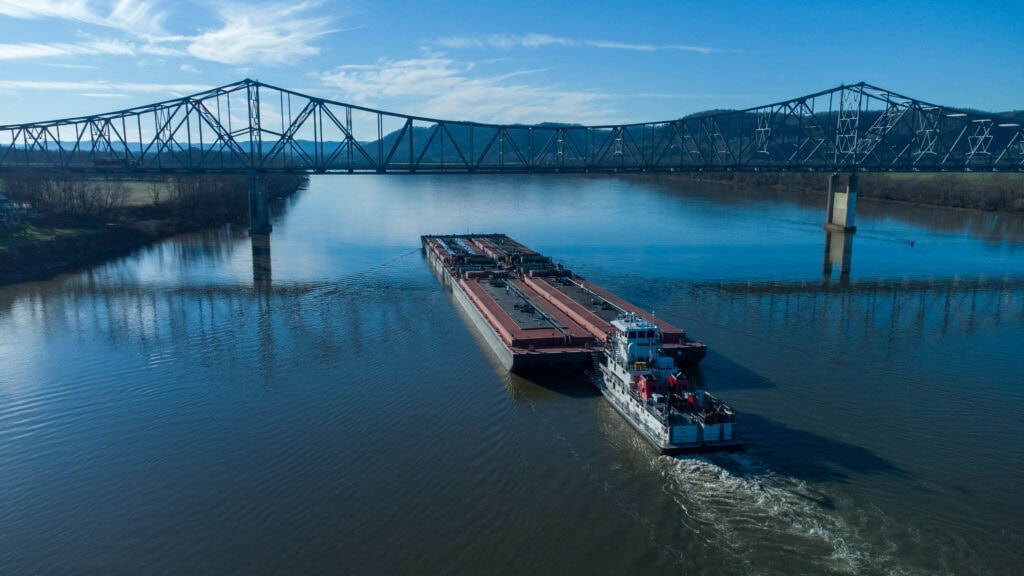Inland Waterways: The Key to Resilient and Sustainable Supply Chains

As businesses facing growing pressure to bolster resilience and sustainability, technological advancements and last-mile logistics take center stage. But one critical yet underappreciated element deserves a spotlight: inland waterways. These natural networks offer a reliable, efficient, and eco-friendly mode of transportation that plays a vital role in future-proofing supply chains.
For logistics, transportation, and technology leaders, understanding and leveraging the full potential of inland waterways could be the key to building supply chains that withstand disruption while supporting environmental goals.
A Resilient Backbone for Supply Chains
Global supply chains have faced challenges in recent years, from port congestion to labor shortages and extreme weather events. These disruptions have highlighted the vulnerabilities of over-reliance on certain transport modes, such as trucking and rail. Inland waterways present an opportunity to diversify transportation strategies, offering an alternative that is less prone to bottlenecks and external pressures.
Barge transportation on rivers and canals is inherently safer, with a lower risk of accidents compared to road and rail, making it a reliable and secure option. Additionally, waterways often provide direct routes to critical inland hubs, enabling smoother integration with intermodal networks and reducing the risk of delays caused by chokepoints.
The Sustainability Imperative
As companies aim to meet sustainability goals, inland waterways offer significant environmental advantages. Barge transport emits substantially less CO₂ per ton-mile compared to trucks and trains. With regulations on carbon emissions and growing consumer demand for greener operations, adopting water-based logistics aligns seamlessly with broader ESG (environmental, social, and governance) objectives.
Additionally, barges boast a remarkable ability to move large quantities of goods efficiently. A single barge can carry the equivalent of dozens of truckloads, reducing overall fuel consumption and minimizing wear and tear on road infrastructure. For industries like agriculture, energy, and manufacturing, this efficiency directly translates to lower costs and smaller carbon footprints.
Unlocking Strategic Advantages
Inland waterways don’t just help meet sustainability targets—they also unlock strategic opportunities for businesses. Here’s how:
Cost-effectiveness: Shipping via waterways often incurs lower transportation costs compared to road and rail. This affordability can be a game-changer for companies looking to optimize budgets without sacrificing service quality.
Volume handling: Waterways can accommodate heavy and oversized breakbulk shipments that would otherwise strain road or rail networks. This flexibility is particularly valuable for industries reliant on bulk commodities.
Fuel efficiency: Barges offer greater fuel efficiency to trucks, producing fewer emissions and minimizing carbon footprint.
Modernizing Inland Waterways
To fully capitalize on the benefits of inland waterways, modernization is essential. Investment in smart technology, such as real-time tracking systems, can enhance visibility and efficiency across inland marine logistics. Additionally, government initiatives that drive necessary upgrades to infrastructure, such as locks, dams, and port facilities, ensure waterways are equipped to handle future demand.
Forward-thinking supply chain managers are already exploring these innovations, integrating data from inland marine highway routes into their broader logistics strategies. The result is a more agile, adaptive supply chain capable of meeting the demands of 2025 and beyond.
Charting the Future
As we get deeper into 2025, it’s clear the companies poised for long-term success will be those that prioritize resilience and sustainability in their supply chain strategies. Inland waterways represent a vital piece of this puzzle, offering unmatched reliability, cost-efficiency, and environmental benefits.
Leaders must take proactive steps to evaluate how waterways can complement their existing networks. This means not only assessing the feasibility of integrating marine transportation but also advocating for infrastructure improvements and integrating modern solutions to enhance barge visibility.
The future of supply chain management lies in balancing innovation with tradition, embracing the best of emerging technologies while leveraging timeless resources like our nation’s waterways. By doing so, businesses can build networks that are not just prepared for 2025, but for decades to come.

